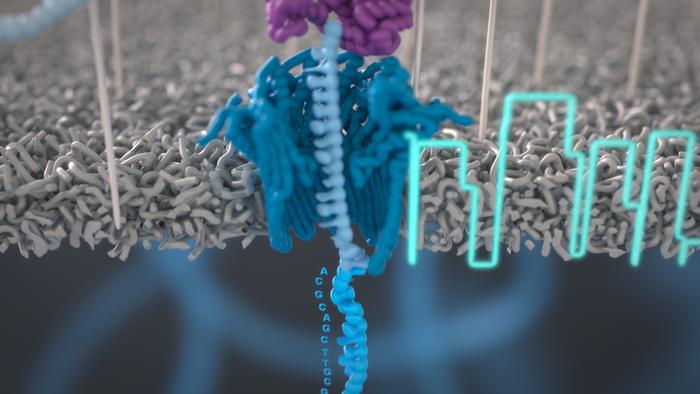Understanding Nanopore Technology in Modern Science
Definition: Nanopore technology involves the use of nanoscale holes to analyze and manipulate molecules, as well as to create novel materials and devices. This cutting-edge technique enables the precise detection and characterization of various biological molecules, such as DNA, RNA, and proteins. Additionally, nanopores are utilized in creating photonic crystals for optical applications and in developing high-performance energy storage devices. By exploiting the unique properties of nanoscale structures, scientists can gain insights into molecular structures and functions, manipulate light, and enhance energy storage capabilities, paving the way for advancements in genomics, diagnostics, photonics, and energy technologies.

What are Nanopores and How Do They Work?
A nanopore is a tiny hole, typically with a diameter of 1 to 100 nanometers. These nanopores can be formed in solid-state materials or biological membranes. The principle of operation revolves around the passage of molecules through the nanopore, which temporarily disrupts an ionic current that is being measured across the pore. By analyzing these disruptions, characteristics such as the size, shape, and sequence of the molecules can be determined. In addition, arrays of nanopores can be used to create materials with unique optical and electrical properties.
How Does Nanopore Technology Work?
In practical terms, nanopore technology involves applying a voltage across a thin membrane with a nanopore. When molecules such as DNA pass through the nanopore, they cause characteristic changes in the ionic current. These changes are recorded and analyzed to identify the molecules. The technology is highly sensitive and can detect single molecules, making it an invaluable tool for molecular biology and biochemistry. In photonic and energy storage applications, the precise arrangement and properties of nanopores are exploited to manipulate light or enhance charge storage capabilities.
Key Features of Nanopore Technology
Nanopore technology offers several unique advantages:
- Direct, Real-Time Analysis: Unlike other molecular analysis techniques, nanopore technology allows for the direct and real-time observation of molecular interactions and processes.
- High Sensitivity and Specificity: Nanopores can detect individual molecules, providing a high level of sensitivity and specificity in molecular identification and sequencing, known as single-molecule detection.
- Minimal Sample Preparation: The technology typically requires minimal sample preparation, simplifying the workflow and reducing the risk of sample contamination or loss.
- Versatility: Nanopore devices can analyze a wide range of molecules, from small ions to large polymers and proteins, making them versatile tools in research and diagnostics.
- Tunable Optical Properties: Arrays of nanopores can be designed to create photonic crystals with specific optical properties, enabling the manipulation of light at the nanoscale.
- Enhanced Energy Storage: Nanoporous materials can significantly increase the surface area available for charge storage, leading to improved capacitor and battery performance.
Limitations of Nanopore Technology
Despite its advantages, there are challenges associated with nanopore technology:
- Signal-to-Noise Ratio: The detection of changes in ionic current can be affected by noise, which may complicate data interpretation.
- Throughput and Speed: The throughput and speed of analysis can be limited by the need to sequentially analyze molecules passing through the nanopores.
- Fabrication Complexity: Creating precise and uniform nanopore arrays for photonic and energy storage applications can be challenging and costly.
Applications of Nanopore Technology
Nanopore technology has a broad range of applications:
- Nanopore Sequencing: Revolutionizing genomic sequencing by enabling long-read sequencing, which allows for more comprehensive mapping of genomes.
- Nanopore Diagnostics: Utilized in diagnostics to detect pathogens and genetic mutations with high sensitivity.
- Drug Development: Aids in the study of protein folding and interaction, offering insights into drug targets and mechanisms.
- Nanopore Sensors for Environmental Monitoring: Detect pollutants and pathogens in water and air, contributing to environmental protection efforts.
- Photonic Crystals: Arrays of nanopores can be used to create photonic crystals, which manipulate light in unique ways for applications in optical computing, telecommunications, and sensing.
- Enhanced Capacitors and Batteries: Nanoporous materials significantly increase the surface area for charge storage, leading to higher energy and power densities in capacitors and batteries.
Nanopores in Photonic Crystals
Nanopore arrays can be engineered to create photonic crystals, which are materials with periodic nanostructures that affect the motion of photons. These structures can:
- Create photonic band gaps, preventing light of certain wavelengths from propagating through the material
- Guide and manipulate light with high precision, enabling the development of novel optical devices
- Enhance light-matter interactions, leading to applications in low-threshold lasers, optical switches, and sensors
The ability to fine-tune the optical properties of nanopore-based photonic crystals opens up possibilities for advanced optical computing, high-efficiency solar cells, and next-generation display technologies.
Nanopores in Energy Storage
The use of nanoporous materials in energy storage devices, particularly capacitors and batteries, offers several advantages:
- Greatly increased surface area, allowing for higher charge storage capacity
- Improved ion transport, leading to faster charging and discharging rates
- Enhanced stability and cycle life due to better accommodation of volume changes during charge/discharge cycles
Nanoporous electrodes in supercapacitors can achieve exceptionally high power densities, while nanoporous separators and electrodes in batteries can lead to significant improvements in energy density and charging speed. These advancements are crucial for the development of more efficient and compact energy storage solutions for electric vehicles, renewable energy systems, and portable electronics.
As nanopore technology continues to evolve, its applications in areas like nanopore sequencing, nanopore diagnostics, nanopore sensors, photonic crystals, and energy storage are expanding. This promising field holds the potential to further our understanding of complex biological systems, revolutionize optical technologies, enhance energy storage capabilities, and drive innovations in healthcare, environmental science, photonics, and materials engineering.
Further Reading
Nature Biotechnology, Nanopore sequencing technology, bioinformatics and applications
Nature Nanotechnology, Nanopore-based technologies beyond DNA sequencing
Journal of Energy Storage, Nanoporous materials derived from metal-organic framework for supercapacitor application
Microporous and Mesoporous Materials, Optical engineering of nanoporous photonic crystals by Gaussian-Like pulse anodization
